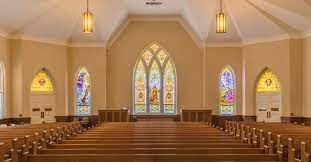MARK TOOLEY
The 13-million-member United Methodist Church is shattering, and traditionalists are building a new Global Methodist Church committed to theological and ethical Christian orthodoxy. Are the new wineskins of a new denomination preferable to remaining a faithful witness within an old denomination?
There are pluses and minuses to each, and neither offers a straight and smooth path.
Traditionalists of other mainline Protestant denominations have faced similar situations in recent years. Official endorsement of liberal teachings on sexuality persuaded some conservatives in the Evangelical Lutheran Church, Presbyterian Church (USA), and Episcopal Church to create new denominations or join other preexisting denominations. Episcopalians formed the Anglican Church in North America, which has nearly 1,000 congregations and 127,000 members. Presbyterians joined the Evangelical Presbyterian Church, with 630 churches and 130,000 members, or created the Evangelical Covenant Order, with nearly 400 congregations and 130,000 members. Lutherans created the North American Lutheran Church, which now has about 142,000 members and more than 420 congregations.
Those Leaving and Those Left Behind
Progressives may have expected growth after conservatives left. After all, conflict was ended, restrictions were overthrown, the church was now open to “all.” But this never happened. Churches offering only affirmation, without expectations or the possibility of transformation, haven’t commanded loyalty or made new converts.
About 5 percent of the membership in old, liberalized denominations joined the new conservative denominations. But each of the old denominations has lost many more members since liberalizing. For example, the Presbyterian Church (USA) since its 2013 affirmation of actively homosexual clergy has lost over half a million members—about one-third of its membership. Since its 2009 sexual liberalization, the Evangelical Lutheran Church has lost more than 1 million members—about one-quarter of its membership. The Episcopal Church, since electing its first openly homosexual bishop in 2003, has lost over half a million members—about one-quarter of its membership.
Churches offering only affirmation, without expectations or the possibility of transformation, haven’t commanded loyalty or made new converts.
New denominations have largely done well but didn’t initially attract as many conservatives from the old denominations as had been expected. Inertia and commitment to the easier status quo can be powerful. The Anglican Church of North America has planted several hundred new congregations, most—but not all—of which have survived. New denominations have their own theological, political, and personal conflicts, as do all human institutions. People expecting perfection in a new “orthodox” church will be disappointed.
But conservatives who stayed in old liberal denominations expecting their witness could have a wider influence are likely also disappointed. Liberalized denominations show no signs of denomination-wide renewal. The influence of LGBT+ messages continues to grow.
Still, some congregations and clergy adhere to Christian orthodoxy and survive as a minority witness. We can pray their subculture endures. Liberal Protestantism will not survive forever, and perhaps in another generation or two, the embers of Christian orthodoxy will reignite in the small remnant of mainline Protestantism.
Odd Case of Methodism
Unlike most mainline denominations, United Methodism has never officially liberalized its teachings on sexuality and instead strengthened them at its last governing General Conference in 2019 by a 53 percent majority. This was possible only because its membership is international, with nearly half in Africa at that time, where beliefs are very conservative. As the American church shrinks and the African church grows, the conservative majority will only expand.
So why would American United Methodist traditionalists now leave for the newly created Global Methodist Church? Liberals control every position of power within the U.S. part of the church, and U.S. bishops increasingly refuse to uphold church law defining marriage as only between a man and a woman. Twelve of United Methodism’s 13 official seminaries are theologically and ethically liberal. All general church agencies are liberal.
Liberal Protestantism will not survive forever, and perhaps in another generation or two, the embers of Christian orthodoxy will reignite in the small remnant remaining of mainline Protestantism.
A chief challenge for Global Methodism—as for all new denominations—is that American Christians are less interested in denominations, less catechized in denominational teaching, and less interested in sustaining wider institutions. They’re attracted to specific congregations, clergy, and ministries that may or may not last very long.
Amid this upheaval, creating a new denomination will be hard work.
But there’s arguably no other viable path forward for traditional Methodists who want to cleave to and extol orthodox Wesleyan beliefs about Christ, salvation, morality, and the Bible. Historic Methodist beliefs about sanctification, holiness, and perfection have been almost forgotten. The situation in the old United Methodist Church in America will only worsen as liberals insist on a gospel of affirmation. Traditionalists want a gospel of salvation and transformation. These two perspectives ultimately cannot coexist in the same denomination. There can be Christian unity across doctrinal and ethical nonessentials, but the divisions between traditionalists and progressives in mainline Protestantism are unbridgeable.
Some United Methodist leaders insist traditionalists will be welcome even after the denomination jettisons biblical sexual teaching. Traditionalists wonder how this can be so when progressives insist traditional teaching is intrinsically exclusionary and unacceptable.
Hope for the Future
Methodist traditionalists hope, through the Global Methodist Church, to plant new congregations and replant Methodism where it has died. For the first time, church planters will have denominational support for evangelizing unreached peoples. The fields are white for harvest (John 4:35). But of course, there’s no guarantee of success. Global Methodism could become just another small conservative American sect that’s generically evangelical.
Other new denominations face the same question: Can they hold onto the unique goodness and strength of their traditions while simultaneously separating from their denominational structure and educational institutions? It’s still too early to tell.
I hope Global Methodism will connect American Wesleyans with African Wesleyans and others around the world in proclaiming a gospel of salvation, transformation, sanctification, holiness, and perfection. This gospel fueled the original 18th and early 19th-century Methodist revivals and is fueling church growth in Africa. God willing, it could thrive in America.
Mark Tooley is president of the Institute on Religion and Democracy and editor of the foreign policy and national security journal Providence.

